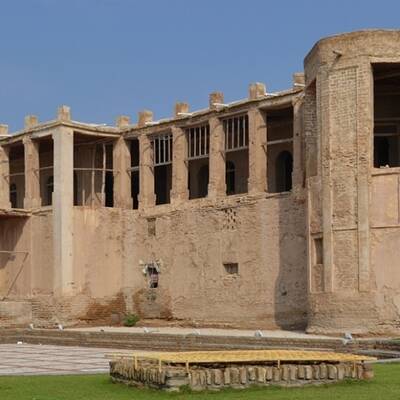
Post and Communications Museum (Tehran)
TehranPost and Communications Museum in Tehran is in fact the previous building of the post of Iran which was located in the National Garden. It was established in 1307 S.H. and opened in 1313 S.H. the building was the replacement of a military barracks which had been placed in the south of Mashq Square complex. It is called Mashq (Exercise) square because of its usage under the reign of Fathali Shah as a military field for maneuvering which was later changed a lot. It is now located in the area between Imam Khomeini and Si Tir Streets. Encompassing an area of 15000 square meter, the building was constructed by the great Persian-Georgian architect, Nikolai Lvovich Markov, with a brick and stone façade using a symmetrical composition. In 1369 S.H. the building started to serve as the Post and Communication Museum of Iran after transferring the objects and tools related to mailing. It was originally called Post Museum but changed into the Museum of Post, Telegraph and Telephone in 1374 S.H. Then, it was called Museum of Post and Telecommunication in 1378 S.H. and finally it was publicly opened as the Museum of Communication in 1393 S.H. The reconstructed complex of Post Museum is in fact one of the oldest and most beautiful state buildings in Iran. It includes two stories with a variety of halls and rooms. Examples of the oldest writing tools and transferring parcel posts and the old versions of post offices (Chāpār which were significant buildings along the ways where the postmen took a rest and the exhausted horses were changed), the first telephones (called Hendely), telegrams, stamps and other communication and telecommunication tools, from postman pigeons to the satellite are on display. There are some main chambers in the first floor: 1. Formalities and ministers with 72 photos of the former ministers of Iran; the first minister of telegraph in Iran was someone named Ali Qoli Khan Mokhber al-Dowleh; 2- the hall of the local stamps including different types of stamps related to Qajar, Pahlavi and Islamic Republic; 3- the hall of mailing objects such as postboxes of Iran and other countries, different kinds of manual seals, old cloths typical in post offices and many other objects; 4- Silk Road hall or the central hall in which the old communicating tools and methods of carrying post parcels are on public display. The hall of International Stamps, the first and the second chambers of telecommunication are the main parts of the upper floor.
